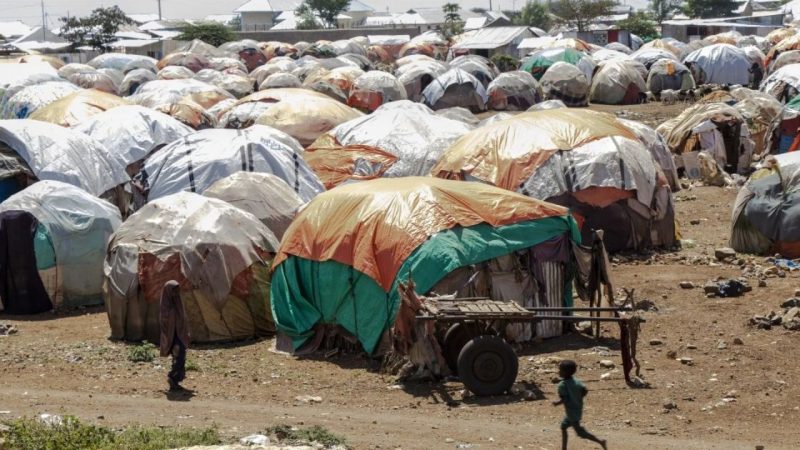AFTER featuring the world’s richest countries a few days ago, we now give you the Top 10 Poorest Countries of the World.
The world’s least affluent nations endure internal conflicts, and ethnic and religious tensions, and their already dire situations have been exacerbated by factors like COVID-19, rampant inflation, and the Ukraine conflict.
The global abundance of wealth and resources theoretically allows for a decent standard of living for every human being. Nevertheless, populations in countries such as Burundi, South Sudan, and the Central African Republic continue to grapple with extreme poverty. In the case of other potential candidates for the unenviable title of the world’s poorest countries, like Afghanistan, Syria, and Yemen, the ongoing conflicts have rendered any economic assessment impossible due to the absence of reliable data.
So, how can we determine the world’s most impoverished nations? While Gross Domestic Product (GDP) per capita is commonly used as the standard measure, adjusting for variations in living costs and inflation rates through Purchasing Power Parity (PPP) provides a more accurate assessment of an individual’s purchasing power in a given country.
Long-term poverty is challenging to attribute to a single cause. Corrupt governance can transform a prosperous nation into a destitute one, as can a history of exploitative colonization, weak legal systems, armed conflicts, adverse climatic conditions, or hostile neighboring nations. These weaknesses often compound, leading to a vicious cycle where indebted countries cannot afford quality education, resulting in a poorly educated workforce that hampers progress.
The most marginalized households across the globe bore the brunt of the social and economic repercussions of the COVID-19 pandemic. In the world’s poorest nations, where informal employment is widespread, there were no safety nets or temporary financial assistance to sustain businesses and jobs. The World Bank estimates that students of the current generation in low and middle-income countries could face up to a 10% reduction in their future average annual incomes.
Prior to the COVID-19 pandemic, the percentage of the world’s population living in extreme poverty, defined as earning less than $1.90 per day, had dropped below 10%, down from over 35% in 1990. However, the pandemic not only halted this progress but reversed it. Between the onset of the health crisis and the end of 2022, the IMF estimated that an additional 198 million people may have fallen into extreme poverty.
Subsequently, the Ukraine conflict led to a significant surge in food prices. A group of economists, in the “Global Food Crisis Update” report recently released by the IMF, noted, “The COVID-19 pandemic and the war in Ukraine further aggravated food insecurity by reducing current and anticipated supplies of food and fertilizers, triggering a sharp rise in global and domestic food prices. These effects have been compounded by the persistent impact of conflicts and devastating climate-related events in several fragile and conflict-affected states.” Even though price pressures are expected to ease this year, the IMF concludes that an unprecedented 345 million people across 79 countries are projected to face severe food insecurity in 2023, more than double the number in 2020.
These setbacks in food security and poverty reduction are most striking in the top ten poorest countries globally, all of which are located in Africa. On average, the per capita share of the Gross Domestic Product in the world’s poorest nations is a mere $1,380, in stark contrast to the approximately $105,000 figure for the world’s wealthiest countries.
Of the countries on this list, three are situated in or are part of Africa’s Sahel region, where persistent droughts lead to food shortages and related health and social challenges. Additionally, five of these nations are landlocked, placing them at a distinct disadvantage compared to those with access to maritime trade routes. All of them struggle with political instability, have experienced contested elections or sectarian/religious conflicts, and rank poorly on the list of the world’s safest countries.
Top 10 Poorest Countries in the World
Below is a ranking of the ten poorest countries, starting from the country ranked tenth poorest and progressing to the country ranked as the top poorest in the world for 2023.
Country/Territory
GDP-PPP ($)
10 Liberia 1,788
9 Chad 1,787
8 Malawi 1,682
7 Niger 1,600
6 Mozambique 1,556
5 Democratic Republic of the Congo 1,474
4 Somalia 1,374
3 Central Afrian Republic 1,127
2 Burundi 891
1 South Sudan 516
10. Liberia
Liberia, the 10th Poorest Country in the World
Current International Dollars: 1,788
Africa’s oldest republic has ranked amongst the poorest countries in the world for many years. Expectations were high when the former football star George Weah became president in 2018. His first years in office were instead marred by high inflation, unemployment, and negative economic growth. After contracting by 3% in 2020 due to the pandemic, GDP recovered to 5% in 2021 and 4.8% in 2022. Weah is up for re-election in October this year.
9. Chad
Chad Worlds Ninth-Poorest Country
Current International Dollars: 1,787
Chad has Africa’s tenth-largest oil reserves yet poverty remains widespread, making it the ninth poorest country in the world. Most of the windfall from the nation’s 2003 oil find was spent by the country’s autocratic ruler, Idriss Deby, on fighting rebels and cracking down on any form of dissent. When Deby was killed in 2021, a military council headed by his son, Mahamat Idriss, took control of the country. The constitution was suspended shortly thereafter, and both the government and parliament dissolved. Idriss remains the “interim” head of state to this day.
8. Malawi
Current International Dollars: 1,682
One of Africa’s smallest nations, Malawi’s economy—largely dependent upon rain-fed crops—remains vulnerable to weather-related shocks. Food insecurity in rural parts is extremely high.
Malawi has enjoyed stable governments since it gained independence from Britain in 1964. But in 2020, the country’s constitutional court annulled former president Peter Mutharika’s win for re-election. Theologian and politician Lazarus Chakwera was sworn in his place, and today structural changes have been slow to materialize. Annual GDP growth dipped in 2022 to 0.8%. Year-on-year inflation, in the meantime, rose to a startling 24
7. Niger
Nigeria, the Seventh-Poorest Country in the World
Current International Dollars: 1,600
With 80% of its landlocked territory covered by the Sahara Desert and a rapidly growing population dependent upon small-scale agriculture, Niger is under threat from desertification. Food insecurity is high, as are disease and mortality rates. Recurrent clashes of the army with the Islamic State (ISIS) affiliate Boko Haram have displaced thousands. In 2021, Niger inaugurated a new president—ex-teacher and former interior minister Mohamed Bazoum—in its first democratic transfer of power. Now considered a bright spot on the continent, the country saw its economy expand by 11% last year, making it seventh of the world’s poorest countries. It is projected to grow a more subdued but still strong 6.1% this year, and by 13% in 2024.
6. Mozambique
Mozambique, the World’s Sixth-Poorest Countries
Current International Dollars: 1,556
Rich in resources and strategically located, this former Portuguese colony has often posted average GDP growth rates of more than 7% in the past decade. Yet it remains mired among the ten poorest countries in the world. Attacks by Islamic insurgent groups since 2017 have plagued the gas-rich northern part of the country. Still, according to the IMF and its sister institution, the World Bank, the medium-term economic outlook for Mozambique is positive, with growth expected to accelerate to 5% this year and 8% the next.
5. Democratic Republic of the Congo (DRC)
DRC World’s Fifth-Poorest Country
Current International Dollars: 1,474
Since gaining independence from Belgium in 1960, the DRC has suffered decades of rapacious dictatorship, political instability, and constant violence, making it a regular in our rankings of the world’s poorest countries. Roughly three-quarters of the country’s 97 million population scrapes by on less than two dollars a day. Yet the World Bank says the DRC has the resources and potential to become one of the richest countries in Africa and a growth driver for the entire continent. The country is already the world’s largest producer of cobalt and Africa’s leading source of copper—essentials in the production of electric vehicles.
4. Somalia
Somalia, the Fourth-Poorest Country in the World
Current International Dollars: 1,374
This country of 17 million in the Horn of Africa never seems to catch a break: 2020 brought coronavirus, floods and an unprecedented infestation of locusts; then Russia’s blockade of Ukraine’s wheat exports helped fill Somali health facilities with severely malnourished children. Today, Islamist insurgents are trying to overthrow the central government concurrent with the worst drought in four decades. With humanitarian agencies warning that about half of the population is in desperate need of assistance, Somalia is again near the top—or bottom—of our world’s poorest countries ranking.
3. Central African Republic (CAR)
World’s Third-Poorest Country Central African Republic
Current International Dollars: 1,127
Rich in gold, oil, uranium, and diamonds, the Central African Republic is a very wealthy country inhabited by very poor people and has been among the poorest countries in the world for the better part of a decade. The sharp increase in essential goods prices that followed the war in Ukraine—simultaneously with cycles of severe flooding and dry spells—has only brought more pain: the United Nations Office for the Coordination of Humanitarian Affairs (OCHA) estimates that approximately 2.7 million people (almost half of CAR’s population) are experiencing acute food insecurity.
2. Burundi
Burundi Second Poorest Country in the World
Current International Dollars: 891
Tiny landlocked Burundi lacks natural resources and has been scarred by a 12-year civil war, contributing to its ranking as the second-poorest country in the world. With about 80% of Burundi’s roughly 13 million citizens relying on subsistence agriculture, food insecurity is almost twice as high as the average for sub-Saharan African countries. Furthermore, access to water and sanitation remains very low, and less than 5% of the population has electricity. President Evariste Ndayishimiye has made an effort to relaunch the economy and repair diplomatic relationships, and last year, both the US and the European Union resumed aid after lifting financial sanctions. Unfortunately, growth remains sluggish, and inflation is projected this year to be around 16%.
1. South Sudan
South Sudan World’s Poorest Country
Current International Dollars: 516
The very poorest of the world’s poorest countries, South Sudan has been wracked by violence since its creation in 2011. Rich in oil reserves, the landlocked state of roughly 11 million represents a textbook example of the “resource curse,” whereby abundance fosters political and social divisions, inequality, corruption, and warfare. The majority of the population is employed in traditional agriculture, although violence and extreme climate events often prevent farmers from planting or harvesting crops.
While the projected economic growth for 2023 could hold strong at 5.8%, but inflation is stronger—among the world’s highest at 27%. UNICEF estimates that well over half of the population—some 7.8 million people—are likely to face acute food insecurity during the April-July 2023 lean season.
But September 2, 2023, will go down as a historic day for the young nation of South Sudan because less than a decade after its basketball federation was inaugurated, South Sudan clinched the sole Paris 2024 qualifying spot for Africa on offer at FIBA World Cup 2023. Source: GlobalFinance
(Filed by Jr Amigo/ai/mnm)







